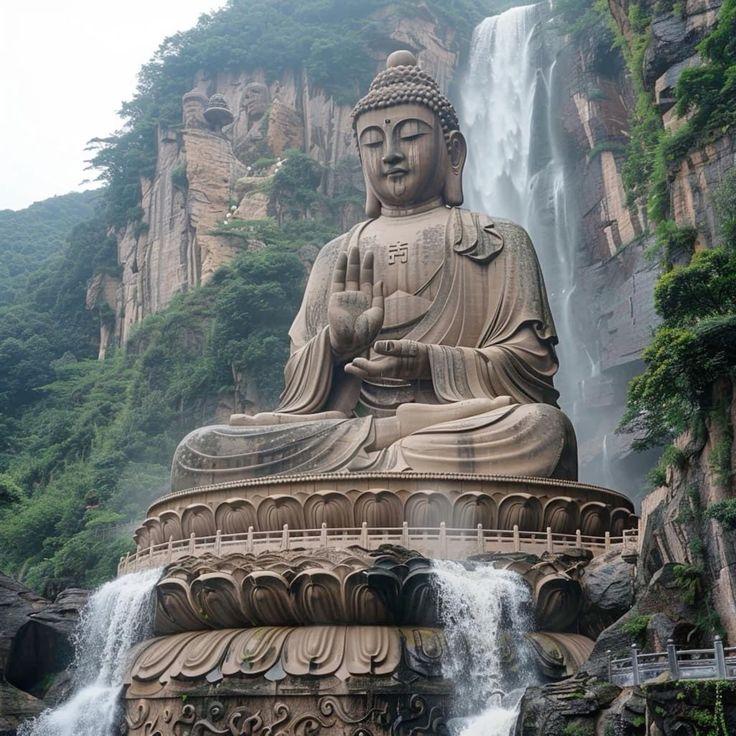Introduction: The Sacred Symbolism of Buddha’s First Seven Steps
The story of Lord Buddha’s birth is one of the most sacred and inspiring episodes in Buddhism. According to Buddhist scriptures, as soon as Prince Siddhartha Gautama (later known as Buddha) was born in Lumbini, Nepal, he took seven miraculous steps in all four cardinal directions.
Each of these seven steps carries deep spiritual meaning — symbolising the Buddha’s divine purpose, wisdom, and liberation from worldly suffering. This miraculous moment marks the beginning of a journey that changed the spiritual destiny of humanity.
Let’s explore the meaning and significance of these Seven Steps of Buddha in Buddhism.
The Story Behind the Seven Steps
According to Buddhist tradition, when Queen Maya Devi gave birth to Prince Siddhartha in the Lumbini Garden, celestial beings descended from heaven to bless the newborn.
Immediately after his birth, the infant prince stood upright, took seven steps, and declared:
“I am the chief of the world,
I am the best in the world,
This is my last birth —
I shall achieve Enlightenment.”
These seven steps are not just a miracle but a symbolic representation of the stages of spiritual awakening and liberation in Buddhism.
The Meaning of the Seven Steps of Buddha
Each step taken by Lord Buddha holds profound significance — reflecting the path toward enlightenment and freedom from the cycle of rebirth (samsara).
Step 1 – The First Step: Awakening to Truth
Represents awareness — the moment of awakening to the reality of life, suffering, and impermanence. It marks the beginning of spiritual consciousness.
Step 2 – The Second Step: Detachment from Material Desires
Symbolises renunciation, the willingness to let go of worldly attachments and pleasures in pursuit of higher truth.
Step 3 – The Third Step: Compassion for All Beings
Buddha’s third step reflects his boundless compassion and love for all living beings, which became the heart of his teachings.
Step 4 – The Fourth Step: The Path of Righteousness
This step symbolises the practice of moral discipline, right conduct, and the foundation of the Noble Eightfold Path.
Step 5 – The Fifth Step: Conquest Over Ignorance
Here, Buddha symbolises wisdom (prajna) — the ability to see things as they truly are, beyond illusion and ego.
Step 6 – The Sixth Step: Attaining Peace and Balance
This represents inner harmony, achieved through meditation (dhyana) and mindfulness. It’s the calmness that arises when one understands the truth.
Step 7 – The Seventh Step: Liberation (Nirvana)
The final step symbolises enlightenment — complete liberation from the cycle of birth and death. It signifies the fulfilment of Buddha’s mission on earth.
The Seven Steps in Buddhist Art and Culture
Throughout Asia, the image of the infant Buddha taking seven steps is a popular and revered motif.
In temples, paintings, and sculptures — Buddha is often depicted standing with one hand pointing to the sky and the other to the earth, symbolising his divine connection between heaven and earth.
At the Maya Devi Temple in Lumbini, pilgrims can still see the sacred site where Buddha took his first seven steps. It remains one of the most visited spiritual destinations in the world — and a highlight of Vision Tour and Travel’s Buddha Tour.
Join Vision Tour and Travel for a Spiritual Journey
At Vision Tour and Travel, we take you beyond sightseeing — into the heart of Buddha’s life, philosophy, and legacy.
Our Buddha Tour Packages cover the most sacred Buddhist destinations including Lumbini, Bodh Gaya, Sarnath, Kushinagar, Rajgir, and Nalanda.
Experience the peace, simplicity, and wisdom that define the Path of Enlightenment.
Call Us Today:
+91-9955281537 | +91-9386725039 | +91-9852949495 | +86-15982305474
Email: info@visionindiatour.com | Visiontour@live.in
Website: www.visionindiatour.com
Read Our More Articles Visit Now :- https://voyostars.com/read-blog/24509_a-journey-to-enlightenment-experiencing-buddha-temple-nepal-with-vision-india-to.html

